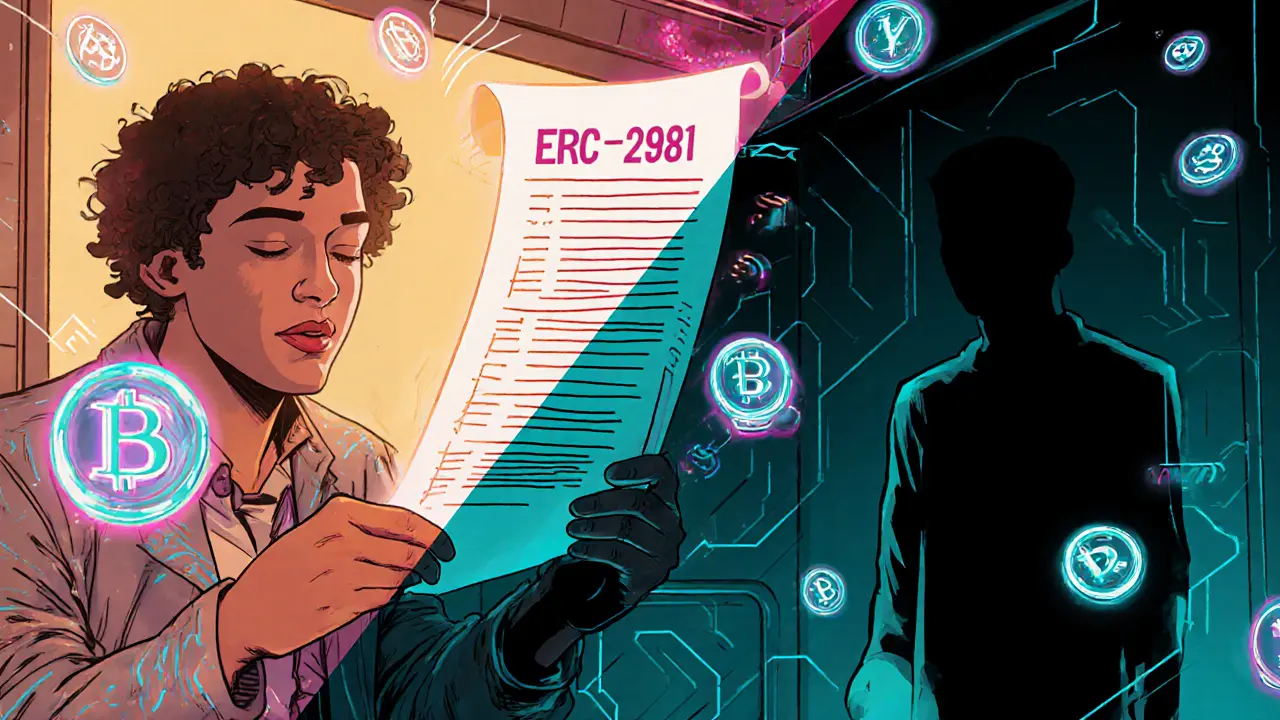ERC-721 Token Standard – The Backbone of NFTs
When working with ERC-721, a non‑fungible token (NFT) standard on the Ethereum blockchain that defines unique digital assets. Also known as ERC721, it provides the rules for creating, transferring, and tracking one‑of‑a‑kind tokens. NFT, a unique digital collectible or asset stored on a blockchain relies on this standard to guarantee scarcity. The process runs on Ethereum, a public, programmable blockchain that supports smart contracts and token standards and uses smart contracts, self‑executing code that enforces rules without intermediaries to manage ownership.
Why ERC-721 matters today
Unlike the fungible ERC‑20 standard, ERC‑721 treats each token as a distinct object. This uniqueness lets developers attach individual metadata, images, or even legal documents to a token. The result is a digital item that can’t be swapped one‑for‑one with another, which is why artists, gamers, and brands flock to it. In practice, the standard defines six core functions—balanceOf, ownerOf, transferFrom, approve, getApproved, and setApprovalForAll—that every compliant contract must expose.
The ERC-721 standard unlocks a whole ecosystem of digital collectibles. From pixel art and 3D avatars to virtual real‑estate parcels, each token’s metadata lives off‑chain, often on IPFS, and points to an immutable JSON file that describes the asset. This separation keeps the blockchain lightweight while preserving a permanent link to the artwork. Marketplaces like OpenSea and Rarible read that metadata to show buyers exactly what they’re purchasing.
Smart contracts are the engine behind minting, selling, and royalty distribution. When a creator mints an NFT, the contract records the creator’s address, the token ID, and the metadata URI. Later, when the token changes hands, the same contract can automatically send a percentage of the sale price back to the original creator—an incentive that reshaped how artists earn from secondary sales.
Ethereum’s gas fees and network congestion have pushed developers toward layer‑2 solutions such as Optimism, Arbitrum, and Polygon. These roll‑ups keep the ERC‑721 logic intact while reducing transaction costs dramatically, making micro‑transactions and high‑volume gaming viable. The core standard stays the same; only the execution environment changes, which means the same NFTs can move across chains with proper bridging contracts.
Metadata integrity is crucial. Most projects store images on decentralized storage (IPFS, Filecoin) and reference them via a content‑addressable URI. If the URI points to a mutable source, the token’s value can evaporate. Developers therefore lock the metadata hash into the contract at mint time, creating a tamper‑proof link between token and asset.
Security isn’t optional. Reentrancy attacks, like the infamous DAO hack, can compromise ERC‑721 contracts if transfer functions call external code before updating balances. Best practices include the Checks‑Effects‑Interactions pattern, using OpenZeppelin’s audited libraries, and running thorough unit tests with Hardhat or Foundry. Audited contracts also help marketplaces verify that a token adheres to the standard before listing it.
The 2024‑2025 boom in NFT projects shows no sign of slowing. Cross‑chain bridges now let ERC‑721 tokens move from Ethereum to Solana, Avalanche, and even Bitcoin’s Ordinals. Brands are experimenting with token‑gated experiences, while enterprises explore tokenizing certificates, patents, and supply‑chain items. This expansion reinforces why a solid grasp of the ERC‑721 standard remains a competitive edge for developers and investors alike.
For builders, the ecosystem offers ready‑made tools: OpenZeppelin provides battle‑tested ERC‑721 implementations; Remix lets you prototype in the browser; Hardhat and Foundry enable local testing and scriptable deployments. Once deployed, you can list the token on any marketplace that supports the standard, integrate it with wallets like MetaMask, and even add royalty logic through ERC‑2981, which complements ERC‑721.
In short, ERC‑721 is the bridge between code and creativity. It gives each digital asset a verifiable, tradeable identity on Ethereum, powered by smart contracts that enforce provenance and royalties. Below you’ll find a curated list of articles that dive deeper into token standards, NFT use cases, security tips, and market analysis—all designed to help you navigate the fast‑moving world of non‑fungible tokens.

